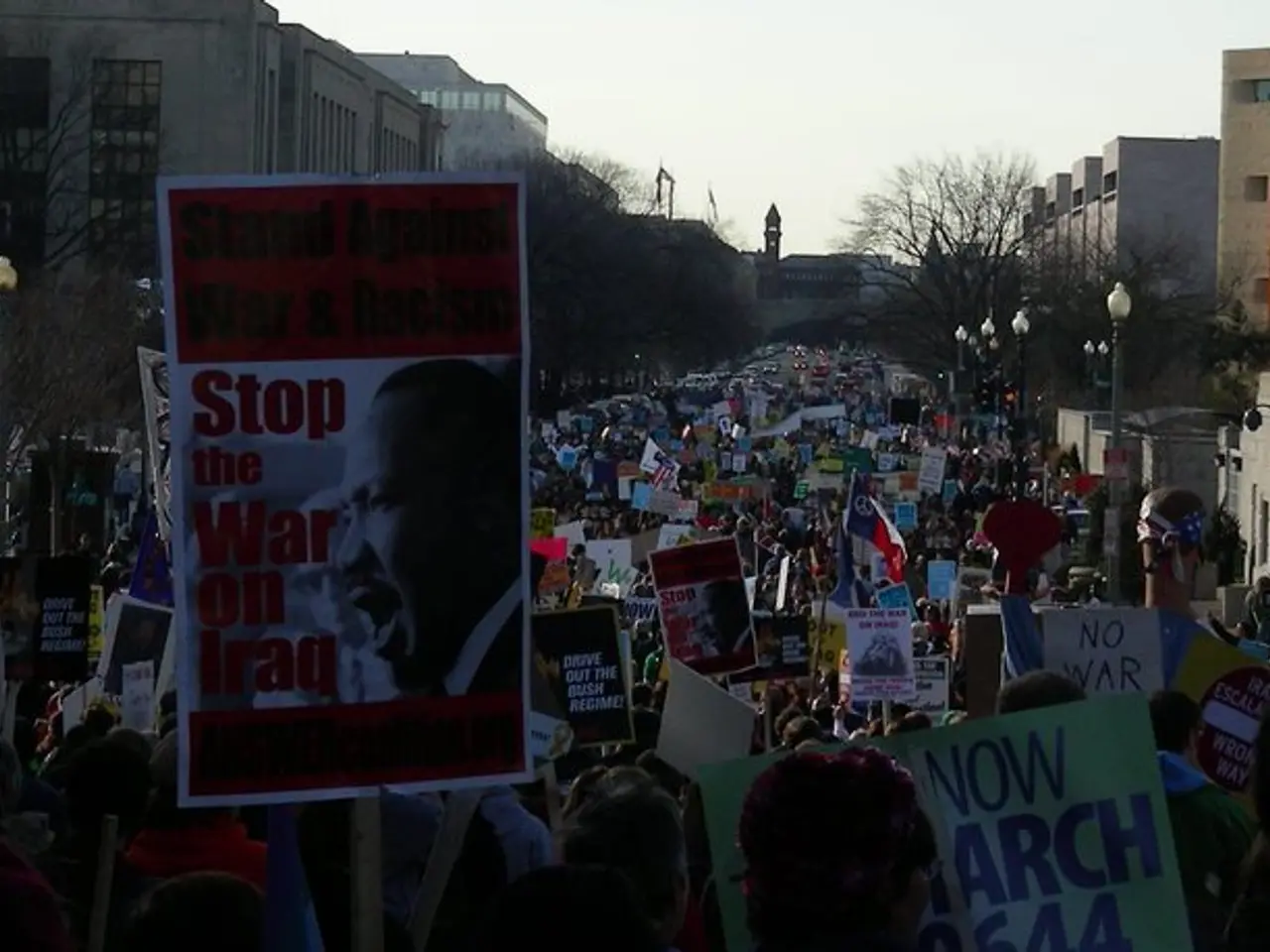Protests in Serbia: The nation grapples with the brink of intensification and potential political gain
In the heart of Europe, Serbia has been grappling with political unrest for over nine months, with mass protests against President Aleksandar Vučić's regime intensifying since November 2024, following a fatal infrastructure collapse in Novi Sad that claimed 16 lives [1]. The demonstrations, initially peaceful, have expanded from large cities like Belgrade to smaller towns such as Valjevo, with frequent clashes between protesters and police [1][2][3].
The student movement, which originated in university circles, has morphed into a broad anti-corruption uprising [3]. However, the movement lacks a cohesive political structure, with the planned student list existing only as an announcement. To prepare for potential elections, it is crucial for the protesters to build a nationwide election campaign, distance themselves from right-wing extremist and nationalist elements, and form a concrete student list or party [4].
The persistence of violence in the protests could further polarize the country and consolidate the old structures, potentially strengthening President Vučić's position and weakening the protest movement. The increasing violence has led to reports of police passivity during attacks by pro-government supporters and questionable protests held outside political opponents' private residences [1][2][3]. The state-controlled media have used these violent incidents to discredit the movement and strengthen the government's narrative.
Elections will take place by 2027 at the latest, with President Vučić hinting at the possibility of earlier elections. Demands for new elections have been voiced for several months, and the success of the student movement in establishing a new political dynamic will be crucial for the future of Serbian democracy [5]. The opposition's growing momentum, especially in smaller towns, points to possible challenges for the ruling party in maintaining its grip.
As the political landscape evolves, the student movement holds the potential to serve as a counterweight to President Vučić in upcoming elections. However, the movement must navigate the complexities of election preparation and avoid being drawn into the cycle of violence that has marred the protests thus far.
References:
[1] Balkan Insight (2025). Serbia: Protests Over Novi Sad Collapse Continue for 9 Months. [online] Available at: https://balkaninsight.com/2025/08/25/serbia-protests-over-novi-sad-collapse-continue-for-9-months/
[2] Radio Free Europe (2025). Serbia: Protests Continue Over Deadly Train Collision. [online] Available at: https://www.rferl.org/a/serbia-protests-continue-over-deadly-train-collision/31706702.html
[3] Al Jazeera (2025). Serbia protests: What you need to know. [online] Available at: https://www.aljazeera.com/news/2025/8/25/serbia-protests-what-you-need-to-know
[4] Radio Free Europe (2025). Serbia: Student Leaders Call for New Elections, Urge Protesters to Return to Peaceful Demonstrations. [online] Available at: https://www.rferl.org/a/serbia-student-leaders-call-for-new-elections-urge-protesters-to-return-to-peaceful-demonstrations/31707068.html
[5] Deutsche Welle (2025). Serbia: Student Movement's Role in Shaping the Future of Democracy. [online] Available at: https://www.dw.com/en/serbia-student-movements-role-in-shaping-the-future-of-democracy/a-57565333
- Amidst the war-and-conflicts and politics dominating the general news in Serbia, the student movement, which originated in university circles, has morphed into a broad anti-corruption uprising, aiming to build a nationwide election campaign for potential elections by 2027.
- As the political landscape continues to evolve in Serbia, the student movement, with its growing momentum especially in smaller towns, holds the potential to serve as a counterweight to President Vučić in upcoming elections, provided they navigate the complexities of election preparation and avoid being drawn into the cycle of violence that has marred the protests thus far.








